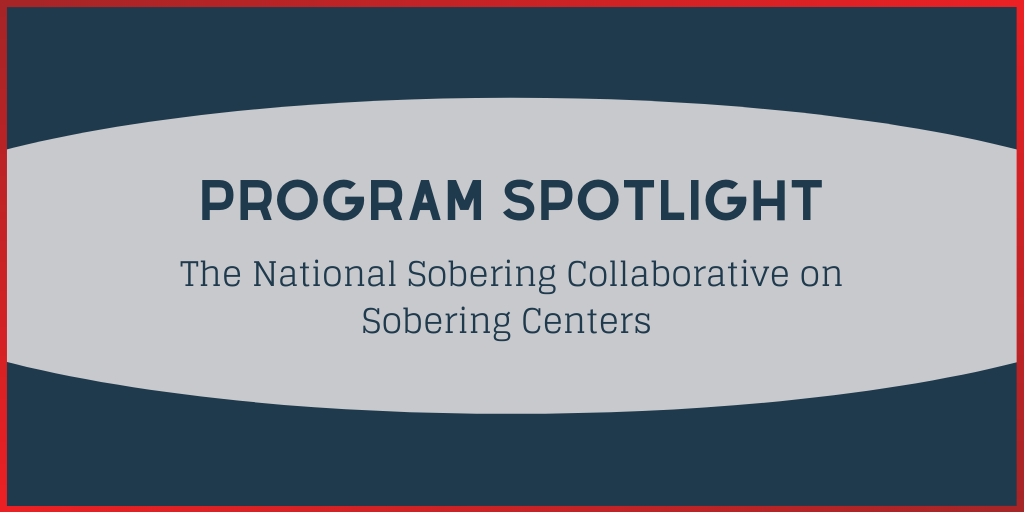The National Sobering Collaborative is a non-profit organization committed to supporting the formation and sustainability of sobering centers for the care of individuals experiencing harmful, hazardous, or disordered substance use. Sobering centers reduce the unnecessary use of jails and emergency departments and provide a low-barrier, compassionate service to people who use substances. It’s a promising approach to reducing potential harms from intoxication, including injuries, driving under the influence, justice involvement, and suicide.
What Are Sobering Centers?
Sobering centers may be recognized by many other names, including but not limited to stabilization programs, recovery programs, diversion centers, and sobering stations. Many communities might benefit from a sobering center but still have confusion about what a sobering center is. Dr. Shannon Smith-Bernardin, president and co-founder of the National Sobering Collaborative, defines sobering centers as “short-term care facilities designed to allow an intoxicated and nonviolent individual to recover from the debilitating effects of alcohol and drugs safely.”
Just as important as knowing what sobering centers are is knowing what they are not. Sobering centers are neither medical or social detoxification centers, nor are they sober housing. Unlike detoxification centers, which supervise the gradual and complete withdrawal of alcohol or other substances from an individual’s system, sobering centers provide a safe location where an individual can recover from the immediate intoxicating effects of recent substance use. People who use a sobering center may not be completely “detoxed” from a substance when they leave the center. Similarly, sobering centers are distinct from sober living houses, which provide long-term recovery housing, often requiring sobriety before and during service engagement. More information can be found in the recent publication Sobering Centers Explained: An Environmental Scan in California (PDF).
The Benefits of Sobering Centers
The concept of sobering centers is over 50 years old and was initially designed to “approach care for alcoholism and public intoxication from a health standpoint.”[1] Research is increasingly confirming the positive benefits of this approach. In 2018, the Santa Cruz County Sheriff’s Office reported a 53 percent decline in public intoxication bookings due to their local “recovery center” (sobering center). Their evaluation (PDF) also revealed a 42.9-minute reduction in the average time that law enforcement officers spent processing public intoxication cases. Similarly, a 2019 review of outcomes related to the use of sobering centers in Houston, Texas, found a 95 percent decrease in jail admissions for individuals involved in public intoxication cases since 2010. This reduction likely has lasting impacts on cost outcomes and service utilization by this population.
The benefits of a sobering center are not limited to law enforcement’s or jail facilities’ bottom lines. Sobering centers have numerous benefits for the people who use their services. For example, individuals at a sobering center often have the opportunity to interact with a peer (a person with lived experience). Simply by being present, peer staff serve an essential function. “So, when people wake up after a few hours,” Smith-Bernardin says, “they are met with somebody who has already been down that road.” If the person is interested and willing, peers can work with them to connect them to services or resources, whether that means treatment, housing, or a functioning pair of shoes. This model is about meeting the person where they are, safely and respectfully.
Ways to Get Involved
The National Sobering Collaborative operates with a mission “to identify, develop, and disseminate translational research, best practices and policies, and education towards the formation and sustainability of sobering centers for the care of individuals with harmful, hazardous, and/or disordered substance use.”
The organization provides a repository of research and information about sobering centers and hosts learning opportunities. It is a connection point for sobering center leaders and staff who wish to share with other sobering center programs. The Collaborative describes itself as providing a forum for national communication and “a platform for sobering care providers and stakeholders from around the country to engage in dialogue regarding care models, best practices, policy, and programmatic issues.”
The Collaborative also maintains a National Directory of Sobering Centers on its website. Interested individuals can learn where sobering centers are currently located, and sobering centers can have their information posted there to be shared more widely. (Programs that would like to be included can contact the Collaborative directly to have their sobering center listed.)
As communities consider more ways to bolster services for their residents at “Intercept Zero“ to enable responses to public health needs without increasing the risk of justice involvement, sobering centers may be an essential addition to the continuum of behavioral health care services.
References
[1] Sobering Centers Explained: An Environmental Scan in California
Like what you’ve read? Sign up to receive the monthly GAINS eNews!



